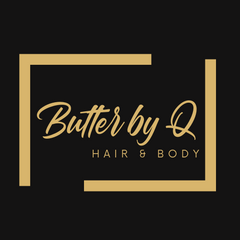LCO or LOC: Which Is Best for High Porosity Hair vs Low Porosity Hair?
Ultimately, it comes down to whether you have high-porosity or low-porosity hair. Good rules of thumb are:
- Use the LCO Method for natural hair with low porosity.
- Use the LOC Method for high-porosity hair.
Let’s look closer at the LCO versus LOC method and why you should choose LCO to moisturize low-porosity hair vs. LOC to moisturize high-porosity hair.

What’s High Porosity vs Low Porosity Hair?

When finding the best moisturization technique for your hair, it’s imperative to know if you have high-porosity hair vs low porosity hair. Why? Because the best way to moisturize low-porosity hair may not be the best way to moisturize high-porosity hair.
Although we dove a bit deeper into hair porosity — specifically high-porosity vs low-porosity hair — in a previous post, here’s a quick refresher.
What Is High-Porosity Hair?
High-porosity or very porous hair allows moisture to effortlessly pass in and out of your shaft. High-porosity hair is often prone to tangling, shrinkage, and frizz, especially in humid weather.
A few calling cards of high porosity hair are:
- Oils, moisturizing products, and water quickly absorb into your hair.
- Your hair tends to break easily and is dry and frizzy.
- Your hair dries relatively quickly when you wash it.
What Is Low Porosity Hair?
Low porosity hair is on the other end of the spectrum. This type of hair has tightly bound and overlapping cuticles that lay flat. In contrast to high-porosity hair, low-porosity hair can be harder to hydrate but will hold moisture better.
Here are a few quick indicators that you may have low porosity hair:
- It can take several hours (up to 24) for your hair to dry when you wash it.
- It takes more than a few seconds for your entire hair to become saturated with water.
Still wondering if you have high porosity vs low porosity hair? You don’t have to go to Maury Povich to get your results — check out this video that provides 5 tests to check hair porosity.
What Is the LOC vs LCO Method?
Now that we’ve gotten porosity out of the way let's get to why you came: LOC method vs LCO method. To refresh your memory:
- LOC stands for Liquid, Oil, and Cream and
- LCO stands for Liquid, Cream, and Oil.
Each one indicates the order in which you should apply the products to your hair. While both methods begin the process with an (L) or Liquid, do you follow it up with an (O) Oil and (C) Cream or a (C) Cream and (O) Oil?
A Closer Look at the LOC Method
The LOC method is an excellent way to moisturize your hair and lock moisture in. In addition, the LOC method can add shine and help counteract frizz. Key benefits of using the LOC method include:
- Helps keep hair follicles and scalp healthy
- Protects hair from damage
- Keeps hair moisturized
- Reduces flyaways, frizziness, and static electricity
- Increases hair shine
The (L) Liquid in LOC

The L stands for Liquid, which can be water or a water-based product, such as a leave-in conditioner. In this step, your hair soaks up the moisture. Finding which L is best for your hair takes some trial and error.
Water is the only real product required in this step. However, if you want to use a conditioner, ensure it’s water-based. In either case, distribute the water evenly throughout your hair, from the tips to the roots. Work it in as evenly as possible.
The (O) Oil in LOC Method

The next step in the LOC Method is to use an O or Oil to lock the moisture in your hair. Using a powerful Oil like jojoba oil can help seal in the moisture.
The (C) Cream in LOC Method

The final step in the LOC method is to use a (C) or Cream for styling. The Cream works to hold the shape of your curls once they dry. Creams like shea butter can further seal and add moisture to your hair.
A Closer Look at the LCO Method
The LCO method involves applying the Cream before the Oil. Like the LOC method, LCO can help keep your hair moisturized and make it easier to manage. This method increases the hydration of your hair by using an additional moisturizer before using the sealant.
It also creates an extra protective coat around your hair follicles to prevent moisture loss. The top benefits of the LCO method are:
- Protects hair from environmental elements
- Gives hair shine
- Keeps hair hydrated
- It prevents frizz and flyaways
The (L) Liquid in LCO Method

As with the previous method, the first step is to apply a water-based product or liquid. Distribute the water evenly throughout your hair, from the tips to the roots, and work it in as evenly as possible.
The (C) Cream in LCO Method

Next, you should apply your Cream product, such as Butter by Q’s whipped shea butter. Our whipped shea butter has raw shea butter, raw mango butter, and other nutrients to provide long-lasting protection.
The (O) Oil in LCO Method

Finally, use the Oil to seal in the moisture from the Liquid and Cream. After you’ve applied the oil, you can add gel for extra frizz control and hold.
Which Method Is Best for Low Porosity Hair vs High Porosity Hair
While we’ve found that one method isn’t worse or better than the other, your method should be based on your hair porosity. Simply put, different hair porosities will respond differently to each moisturization technique.
Should I Use LOC Method or the LCO Method for Low Porosity Hair?
Because low-porosity hair has closed cuticles, it’s extra hard for the hair to absorb moisture. If this explains your hair, you may succeed more with the LCO method. Here’s why:
- The Liquid hydrates your hair.
- The Cream adds a layer of moisture.
- The Oil seals all of the moisture and goodness into your hair.
However, if you have low-porosity hair and use the cream last, it can fail to penetrate your hair shaft follicles. Instead, it will sit on the follicles and lead to product buildup. The LCO method works extremely well for low-porosity hair because it increases the chances of moisture penetration.
Should I Use LOC or LCO for High-Porosity Hair?
If you have higher porosity hair, your cuticles tend to remain open. This means Oil can help seal your hair before adding the Cream. However, choosing the LCO method (Cream first and then the Oil) could cause over-moisturizing your hair, a condition called hydral fatigue.
Here’s why the LOC method works best for high-porosity hair:
- When you apply the Oil after the Liquid, it will immediately lock moisture in. This can help prevent moisture from evaporating from your high-porosity hair.
- Those with high-porosity hair are more likely to experience overmoisturization or hydraulic fatigue. To avoid this, use the Oil as a buffer between the Liquid and Cream.
Find the Best Natural Moisturizers for High Porosity & Low Porosity Hair

Whether looking for the best hair creams for high-porosity hair or use mango butter for low-porosity hair, Butter by Q has you and your hair covered.
Creams for High Porosity & Low Porosity Hair
We are home to an array of whipped shea butter that is perfect for a Cream in the LOC or LCO method:
- Smooth Operator Whipped Hair & Body Butter
- Mango Passion Whipped Hair & Body Butter
- Honey Flower Bomb Whipped Hair & Body Butter
Our premium whipped hair butters are perfect for moisturizing low-porosity hair and acts as a cream for high-porosity hair. They include premium 100% natural ingredients like:
- Raw shea butter
- Raw mango butter
- Jojoba oil
- Rosehip oil
- Avocado oil
- Apricot Oil
- Vitamin E
- And a proprietary blend of plant-based oils and nutrients
Nourish Your Hair and Drive Healthy Growth with Itch-Away Moisturizing Serum
When it comes to dynamic sealing oil, our premium Itch Away Moisturizing Serum is perfect for sealing moisture in your strands. This multidimensional natural hair product is designed to nourish your scalp and help you grow inches!

This best-in-class sealing moisturizer for low-porosity hair and high-porosity hair is full of jojoba oil, rosehip oil, avocado oil, apricot oil, and other hair-nourishing ingredients. Best of all, it
Ready to learn more? Shop all of our 100% natural, plant-based products!


